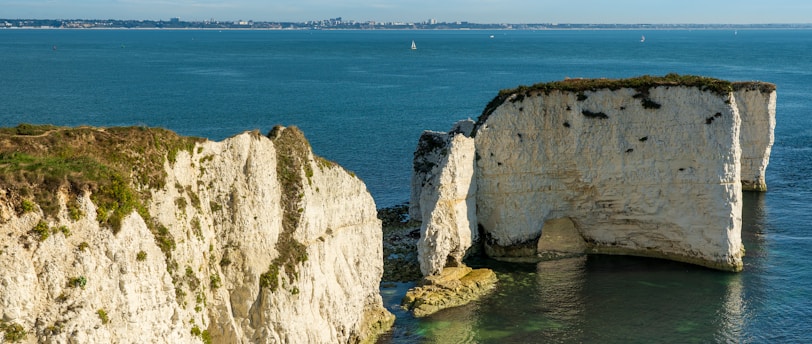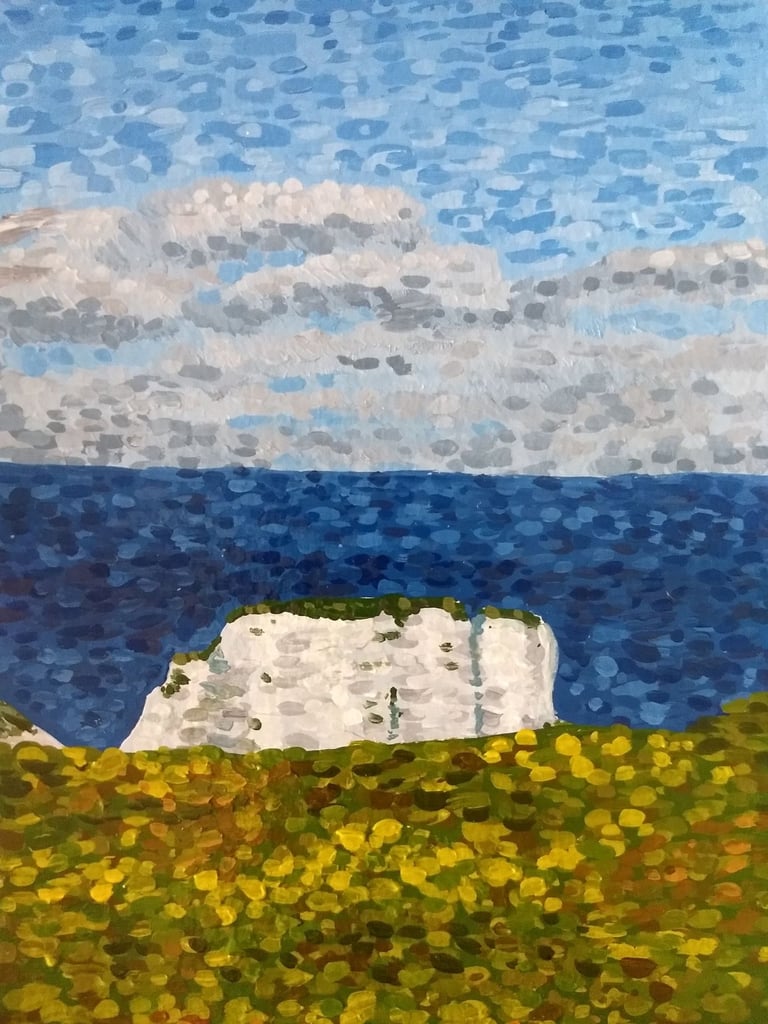Legends of Old Harry Rock
DORSET, ENGLANDSTUDLANDOLD HARRY ROCK
9/26/20233 min read
Old Harry Rock (or, Old Harry Rocks) near Studland is/are an iconic landmark in Dorset, although perhaps a little less famous (if postcards are anything to go by) than Durdle Door in Lulworth. The chalk outcrop looms as a geographic phantom throughout A Dorset Summer.
Just as people don't agree on exactly how to name them (just counting the main rock, or those surrounding him), how they got their name is also in dispute. Some say they are named after the fourteenth-century Poole pirate, Harry Paye. Explanations include that his ships hid near here as a launch point for his raid on merchant ships, or that his treasure was stashed in the cliff's caves. History suggests that Harry ferried pilgrims across the sea to Spain, and, in an admirable display of business acumen, filled his empty holds on the return journey by indulging in piracy along the Spanish coastline, as well as accepting money from Spanish nobility to aid them in their feuds.
The main reason he is celebrated comes a little later - and I've seen slightly different versions of that story. Either in payback for the piratical antics of the man they called Arripaye, or in a run-of-the-mill act of aggression, A Spanish-French alliance raided the coastline along Dorset, launching an attack on Harry's home town. The people of Poole beat the invaders off in a desperate fight, even ripping doors from their hinges to use as shields. Apparently Harry was absent, but in revenge, he gathered a small fleet and captured 120 French ships, giving their cargo to Poole. It is said the people were drunk for a month afterwards on the claret. I'm surprised they even remembered his name after that, but they (maybe) named the rocks for him, and commemorate him on Harry Paye Day - Pirate Day - in Poole.
The other most popular legend links the rocks to "Old Harry", the devil, joining with many other geographic oddities in the British Isles, which are said to be places visited by the devil. The Dorset legend says he slept on the rock one night. The expression "to play Old Harry" means to ruin or destroy, and it's linked here to the idea that it's a warning to ships to steer clear of the rocks. By the way, other places in Dorset with satanic etymology include Agglestone (meaning "Prince's Stone") and the village of Dewlish (devilish).
Another legend, one that I only found out about when I delved a little deeper into Old Harry legends, is that the rock is a drowned Viking, Earl Harold, turned into a pillar of chalk after his raid on the English coast was thwarted. I tried to investigate that tale further, but only got broken links, so maybe it's a legend about a legend :)
Geography says the rocks were once part of a chalk cliff line that stretched out to what is now the Isle of Wight. Erosion over thousands of years left us the Needles at the Isle of Wight and Old Harry by the mainland. Old Harry used to have a wife, but she collapsed into the sea at the end of the nineteenth century, and her title was transferred to the next rock along, so I suppose Old Harry is not that doting a husband.
By the way, H.G. Wells' ashes were scattered here by his son.




Image copyright Blue Dobson 2020
Whatever the origins, Old Harry is an impressive focal point for your walks along the Jurassic coastline. I like to do the walk from Swanage, the town where my parents now live. You can start from the town itself, picking up the path to the cliff near the Grand Hotel, but I prefer to begin at Swanage beach, walking along almost to the point where it turns the corner of the coastline, to pick up the stairs that wind up the cliff and meet the coastal path. From there it's a clearly-marked path along the cliff edge and through fields to Old Harry. After you've rested on the cliffs, a short walk will bring you down into Studland and the Bankes Arms for a very well-deserved pint, and the bus back to Swanage. As far as I can recall, that's less than a couple of hours of walking.
The easiest and more popular route, especially in summer, is to pick up the path in Studland itself, down the road from the Bankes Arms, where you start on a wooded, shaded route and break out into sunshine near the cliff edge. We used to do that quite a lot when I was a child, as a break from sitting on the beach below. Whichever route you choose, you'll be well rewarded at the end.
If you're interested in finding out more about Old Harry rocks, here's a link to an article in Dorset Life.
A couple of walking routes, courtesy of the National Trust and South West Coast Path.
